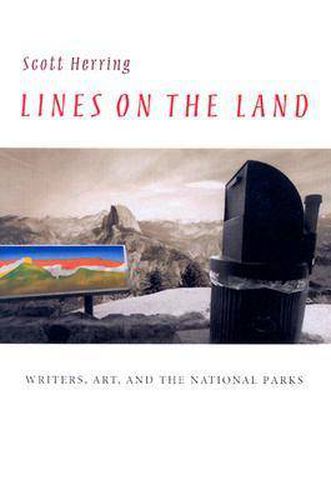Readings Newsletter
Become a Readings Member to make your shopping experience even easier.
Sign in or sign up for free!
You’re not far away from qualifying for FREE standard shipping within Australia
You’ve qualified for FREE standard shipping within Australia
The cart is loading…






The nineteenth-century photographer William Henry Jackson once complained of the skepticism with which early descriptions of Yellowstone were met: the place was too wondrous to be believed. The public demanded proof, and a host of artists and writers obliged. These early explorers possessed a vigorous devotion to the young nation’s wilderness - the naturalist John Muir famously toured the land from Wisconsin to Florida on foot - and through their work established aesthetic categories that exist to this day. In Lines on the Land, Scott Herring contends that these writers and artists were canon makers, recognizing the national parks as naturally occurring works of art and conferring upon them a cultural prestige: the parks were the splendid focal points of the American landscape. These early, canonizing works are homages to a vast, untouched wilderness. This praise would gradually give way, however, to a distinctly American anger - what Herring calls outraged idealism. Later generations were faced with a changing culture that had imperfectly absorbed, and even misrepresented, the national-park aesthetic. The postwar park was overrun by cars and tourists who could not possibly match
$9.00 standard shipping within Australia
FREE standard shipping within Australia for orders over $100.00
Express & International shipping calculated at checkout
The nineteenth-century photographer William Henry Jackson once complained of the skepticism with which early descriptions of Yellowstone were met: the place was too wondrous to be believed. The public demanded proof, and a host of artists and writers obliged. These early explorers possessed a vigorous devotion to the young nation’s wilderness - the naturalist John Muir famously toured the land from Wisconsin to Florida on foot - and through their work established aesthetic categories that exist to this day. In Lines on the Land, Scott Herring contends that these writers and artists were canon makers, recognizing the national parks as naturally occurring works of art and conferring upon them a cultural prestige: the parks were the splendid focal points of the American landscape. These early, canonizing works are homages to a vast, untouched wilderness. This praise would gradually give way, however, to a distinctly American anger - what Herring calls outraged idealism. Later generations were faced with a changing culture that had imperfectly absorbed, and even misrepresented, the national-park aesthetic. The postwar park was overrun by cars and tourists who could not possibly match